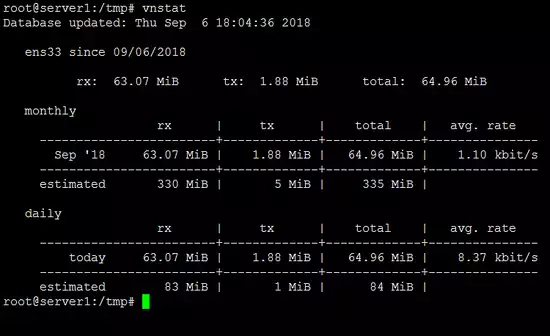
How to monitor network traffic on Ubuntu using vnStat
Monitoring network traffic or bandwitdh usage is a must in a SysAdmin tasks. There are many differents tools to manage this monitoring, but one of my favorites is vnStat. The main advantage of this tool is the simplicity of its usage. Installation With Ubuntu, the way to install this tool is with apt. sudo apt install vnstat First steps Once installed, it is important to know which interfaces are going to be monitoried. For this, you can use next command ...